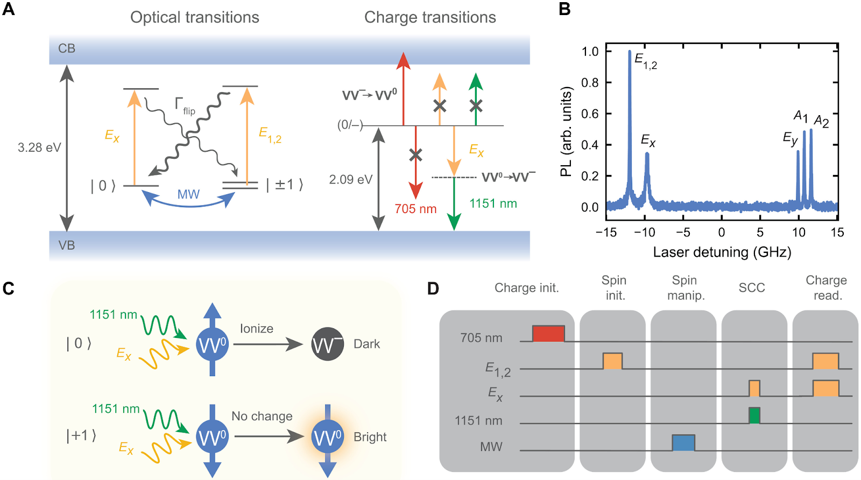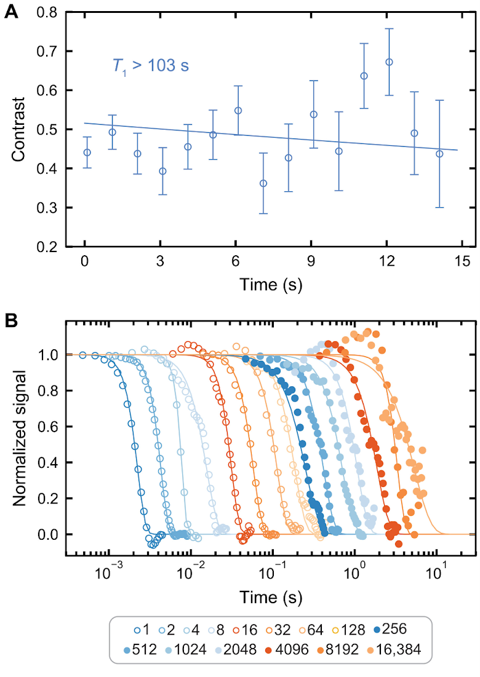One of the outstanding challenges for spin defects in silicon carbide is single-shot readout. In our study, we demonstrate single-shot readout of an isolated, single VV0 done through spin-to-charge conversion, a process that maps the defect’s spin state to its long-lived charge state.
Building upon our previous work and understanding of the VV0 charge state dynamics, we are able to pump our defect into the correct charge state and ionize our defect with an ionization laser that is spin-selective. Our 705-nm laser resets the charge state of the divacancy from VV- to VV0, while we find that 1151 nm laser is able to excite the Ex transition (ms=0) by ejecting a hole, thereby ionizing the defect. When the 1131 nm laser that is resonant with the Ex transition is applied to the defect with the 1151 nm laser, the defect is ionized. Both lasers are not able to ionize the defect by themselves because they do not have the right energy, so we are able to have a spin-selective readout scheme of the charge state. The spin-to-charge conversion process begins with the charge reset of the defect, followed by an optical spin initialization by pumping the E1,2 transition, spin manipulation via microwaves to cycle between the ground state spin states, the Ex transition laser and 1151 nm laser to ionize the defect when in the ms=0 state, and lastly the charge readout from the E1,2 and Ex lasers being applied to monitor the charge state the defect is left in.

From this process, we are able to achieve single-shot readout of the VV0 with 80.8% fidelity. From this readout, we then take advantage of the signal enhancement to then measure record-long coherence times of the electron spin using dynamical decoupling. We find that the measured T1 of the VV0 exceeds 103 s at the very minimum, and by using XY8 report 5 s of coherence for T2. The material used was isotopically engineered to reduce the flip-flop interactions between the electron spin and nuclear spin, so we are able to demonstrate over two orders of magnitude improvements to the T2 from previously reported measurements of coherence reported in the divacancy system.

Details can be found in our manuscript: